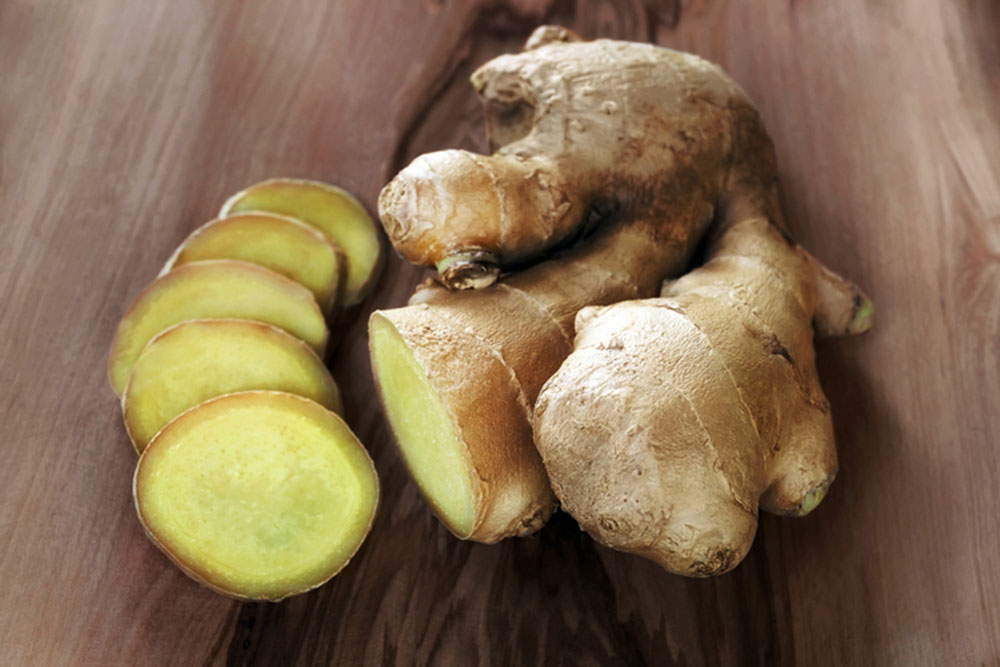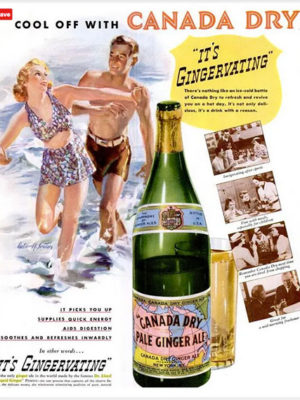
It’s unclear why redheads are sometimes called “gingers” when ginger root is nowhere near the hair color. / iStock photo.
THERE’S A GAME I play when I have nothing but pen and paper and time to kill: How many different words can I make from the first word I see?
—-
I see . . . ginger. I happen to be drinking ginger ale, so this is a particularly lucky break since I’m supposed to be writing a gardening column, not sitting at a café procrastinating.
—-
There’s gin, rig, grin, egg, erg . . .
—-
Well, that was a bust. I do see one more . . . but I’ll skip it.
—-
Here’s another game: How much can I write about a single word without exceeding 800 words. One needs a cut-off, because this can go on forever if you have Internet access. Amazing the paths . . .
—-
Let’s pick one at random: ginger.
—-
Here’s what comes out of the top of my head.
—-
Ginger is a root that you can grate and turn into a powder. “Not enough ingwer,” my father would break out the German over a bland honey cake. Honey cake is an essential for the Jewish New Year, where we hope for a sweet one. It’s also essential to teglach, an impossibly tooth-rotting dessert that consists of nuggets of dough baked in honey, then doused with more honey, then studded with nuts and raisins and sprinkled with cinnamon and ginger.
—-
It’s also essential to pumpkin pie, applesauce and, of course, gingerbread.
—-
A swig of ginger ale is supposed to help settle your stomach.
—-

Most old print ads for Canada Dry ginger ale championed it as a classy thirst-quencher. But one very early ad (not shown) promises that the drink is “absolutely pure and safe to drink.” Well thank goodness.
Does it work? Turning to the web, we find an article in Atlantic Magazine. Ginger ale’s most common therapeutic use is relieving nausea caused by “gastrointestinal bugs, or gastroenteritis. Clinical trials have shown, though, that ginger is at least marginally effective against nausea caused by chemotherapy, anesthesia, motion sickness, and pregnancy.”
—-
There have not, however, been large-scale studies because there’s “no profit to be made” from natural substances.
—-
Who ever thought of eating this root, anyway? (Don’t you ask yourself that fairly frequently about strange-looking foods?)
—-
Ginger is not appealing to look at and not particularly tasty on its own unless you encrust it in sugar. If you were starving, though, I suppose you’d eat it. That’s probably how it happened. A starving person, probably a man, was gnawing on ginger, making a face, and a woman held out a sweet apple and said, “Here, try it with this.”
—-
You can grow ginger, operative word: you. I bought a ginger plant last year, at Home Depot when I was shopping for light switches or something. It was about 4 feet tall with strappy leaves and a huge honeycomb of a flower in a pink so shocking it was nearly fluorescent. I wasn’t sure if it was wonderful or ghastly. It was ghastly. It also died, which was a good thing. It was certainly flashy, though, which usually appeals to me.
—-
People call redheads gingers, which makes no sense because ginger is yellow. I just flipped through several hundred photos of ginger—ah, the handy Internet! There are many photos of the bulbous root, grated piles of it, and candied—not a single photo was even slightly red.
—-
Those with red hair should rightly be called turmerics, which is reddish. Or, even better, paprikas. Paprika is celebrated for its feistiness, a trait assumed of redheads.
—-
Wasn’t Ginger a character on “Gilligan’s Island”? She was a redhead, as I recall. Glorious Rita Hayworth was also a redhead; I can’t imagine her being called ginger—she’d be a paprika. Prince Harry is called a ginger, but he’s clearly a turmeric. Ginger Rogers, a blond, happens to be properly named.
—-
You can buy red hair in a box, shades that range from pale pink to strawberry to burgundy—all names that have a real reverberation of red. You can also have it done in a salon. Either way is a bad idea. The upkeep is constant, costly and therefore ridiculous. On the other hand I read somewhere that red hair can substitute for makeup—it can be that striking. But this is not about red.
—-
Ambling about the Internet, looking for nuggets of ginger I find that one—despite Harry—should be wary of calling a Brit a ginger: It’s slang for gay.
—-
Canada Dry ginger ale, which originated in Canada in 1904 and used to have a beaver sitting on top of the map on Canada on the label, is now made all over the world. It is called “dry” because it is not as sweet as other soft drinks, or the other ginger beverages being made at the time.
—-
It was once advertised as “The Champagne of Ginger Ales,” with pictures of bon vivants sipping it from crystal glassware at chic supper clubs. There’s a wonderful assortment of vintage labels and ads to be found at http://www.vintageinn.ca/2016/04/canada-dry-torontos-original-beverage-champagne-ginger-ales/
—-
Multiple lawsuits have been mounted (or whatever you do with lawsuits) protesting that the company should not be claiming that it’s “made from real ginger,” as an analysis showed there are only two parts per million of ginger extract. The company has been ordered to change its label to include the word “flavor” or “extract.”
—-
Says the website MousePrint.org, which I selected as representative because I liked the name, “Consumers who purchased Canada Dry ginger ale are entitled to modest compensation. Without proof of purchase, you can get 40 cents a can/bottle, up to $5.40. With sales receipts, you can get reimbursed at the same rate for up to 100 units.”
—-
Exciting news, if you’ve been guzzling it in the hope of relieving your dyspepsia.
—-
And that is 800 words on the word ginger. The end.
—Stephanie Cavanaugh
LittleBird “Stephanie Gardens” finds amazing diversions on the Internet, many of which have nothing to do with gardening (not really).
